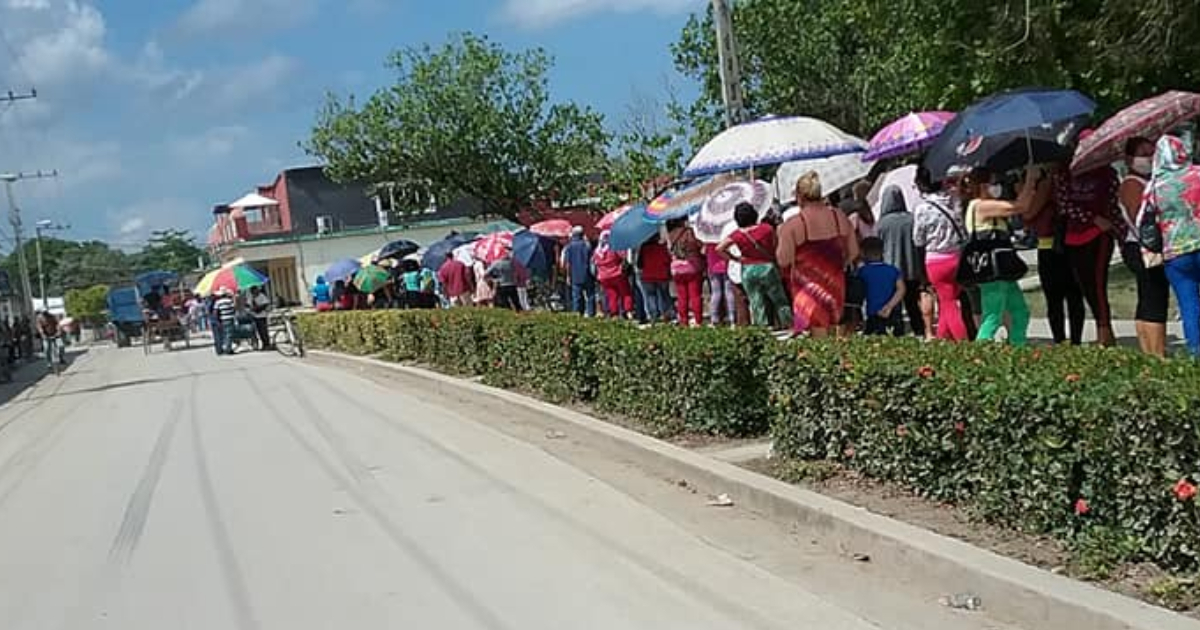The afternoon of Wednesday was particularly sweltering in Cuba, where a total of 24 weather stations reported temperatures exceeding 95 degrees Fahrenheit. According to the Forecasting Center of the Institute of Meteorology (INSMET), maximum temperatures ranged between 91 and 97°F. The highest value recorded was 100.2°F in Velasco, a locality in the municipality of Gibara, Holguín.
Throughout the day, the country was under the influence of high-pressure systems, and combined with low humidity levels, this resulted in scant rainfall across most of the territory. However, it did rain in Las Tunas at night, with an accumulation of 0.6 inches.
The early hours from Wednesday to Thursday were warm, with minimum temperatures ranging from 73.4 to 78.8°F. The highest value was recorded at the Cape San Antonio station at 82.2°F, while the lowest was 69.1°F in Santo Domingo, Villa Clara, as detailed by the Institute in its report.
Persisting Heatwave and Scattered Showers Expected
For today, high temperatures and isolated showers in some interior localities of the eastern half of the island are expected in the afternoon, generated by the intense daytime heating.
"The afternoon will be very warm with maximum temperatures between 91 and 97 degrees Fahrenheit, higher in some interior areas. At night, temperatures will range between 78.8 and 84.2°F," forecasts INSMET.
This Tuesday, Cuba reached 104°F for the second time in its history, and within just a month, recorded in the municipality of Bolivia, in Ciego de Ávila.
Specialist Bryam Pérez detailed that the automatic weather station located in the Avileño municipality marked that value, alongside the stations in Primero de Enero and Falla in the same province, which recorded 100°F and 98.2°F, respectively.
In Camagüey, the temperature record was broken for the second time in May, reaching 99.1°F. The previous record was on May 11, with 98.6°F.
Similarly, Villa Clara recently broke its own temperature record.
What is tragic is that these temperatures are occurring amid an unprecedented energy crisis in Cuba, where prolonged power outages have left the population in constant suffering, fearing that as summer approaches, the situation will worsen.
Currently, many families, including children, sleep on the streets to try to get some rest at night.
"Who explains to a child that they can't watch TV, that after sleeping poorly and experiencing 16 hours (or more) of a blackout, they must wake up to another blackout to go to school?" questioned activist Guelmi Abdul on Facebook.
"Who explains to a bedridden, demented elderly person that they must endure the heat with temperatures exceeding 100°F?" she emphasized.
Frequently Asked Questions About Cuba's Heatwave
The ongoing heatwave in Cuba has raised many concerns and questions among the population. Below are some frequently asked questions to provide more insight into the situation.
What is causing the extreme heat in Cuba?
The extreme heat in Cuba is primarily due to high-pressure systems and low humidity levels, which contribute to higher temperatures and reduced rainfall.
How are the power outages affecting the population during this heatwave?
The prolonged power outages are making it difficult for people to cope with the high temperatures, leading to increased discomfort and health risks, especially for vulnerable groups like children and the elderly.
What are the recorded high temperatures in different regions of Cuba?
Some of the recorded high temperatures include 100.2°F in Velasco, 100°F in Primero de Enero, 98.2°F in Falla, and 99.1°F in Camagüey.
